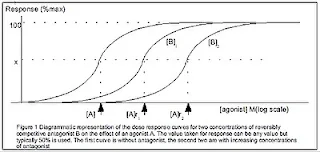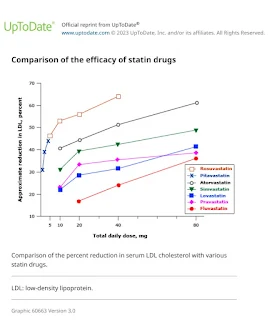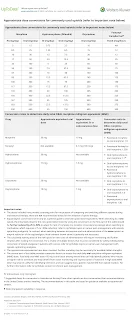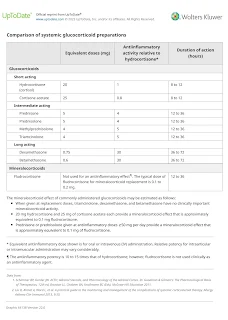Drug Potency
Introduction
As I was reading about sulfonylureas on Rang and Dale's Pharmacology, I learned that sulfonylureas are classified as first-generation and second-generation agents, based on their relative potency.
- First-generation agents (e.g. chlorpropamide, tolazamide and tolbutamide) are lower in potency in relative to the second-generation drugs (e.g. glyburide, glipizide, and glimepiride) and are rarely used these days due to higher risk of adverse effects.
- To illustrate, glibenclamide is 150 times more potent than tolbutamide.
One day, a second-year pharmacy student asked me on what "more potent drug" meant.
- I had to paused and think about how to explain potency.
Maximal Effective Concentration (EC50)
In pharmacology, potency is a measure of drug activity expressed in terms of the amount required to produce a given intensity of effect.
- Maximal effective concentration (EC50) is a parameter used to determine drug potency. It refers to the concentration of a drug, antibody, or toxicant that induces a response halfway between the baseline and maximum after a specified exposure time.
In simple terms, the lower the EC50, the less the concentration of a drug is required to produce 50% of the maximum effect and thus, the higher the potency.
NOTE: Concentration–effect curves cannot be used to measure the affinity of agonist drugs for their receptors, because the response produced is not directly proportional to receptor occupancy. This often arises because the maximum response of a tissue may be produced by agonists when they occupy less than 100% of the receptors. Under these circumstances, the tissue is said to possess spare receptors.
Summary
In general, there is a misconception among the public that a larger strength drug is equivalent to a stronger or more effective drug. Few examples that I have encountered before include
- Ranitidine 150 mg should provide more gastric relief than pantoprazole 40 mg.
- Atorvastatin 20 mg is weaker than simvastatin 80 mg.
- Metformin 1000 mg will cause a greater drop in blood sugar than gliclazide MR 60 mg.
- Fexofenadine 180 mg is a stronger antihistamine than desloratadine 5 mg.
As a pharmacist, you learned about drug potency and know all the statements above are false. But, how would you explain to a layman?
- Importantly, drugs work in different ways, and their effects cannot always be compared directly based on dose.
- Some medications are very potent, meaning they only need a small amount to work effectively. Others may require higher doses.
- Also, the effectiveness of some drugs can vary significantly between individuals.





Comments
Post a Comment